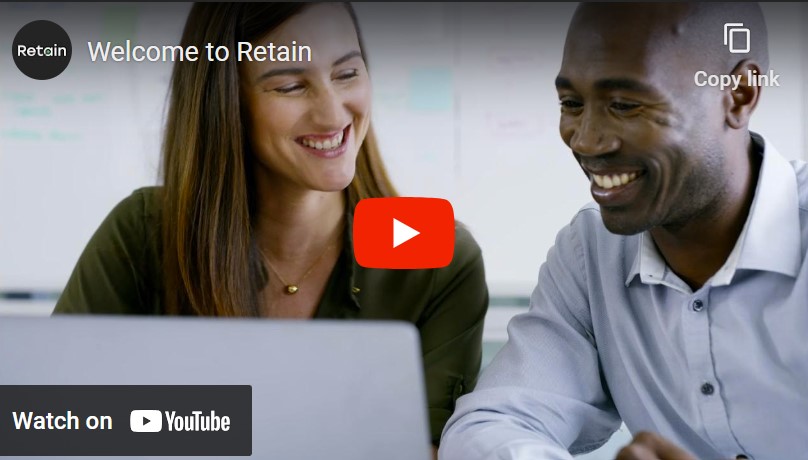Resource forecasting is not just about predicting your resource needs. It involves understanding requirements, assessing available resources, and estimating future needs. But what does it mean to follow best practice in resource forecasting?
Adopting best practice is about using proven methods, strategies, and tools to ensure you're making the most accurate forecasts possible. In a competitive industry, it's these best practices that can give your firm the edge.
In this post we’ll look at best practice resource forecasting, we will explore its components, benefits, and the role of emerging technologies like Artificial Intelligence. But first, let’s take a look at the fundamentals. ?
3 fundamentals of best practice resource forecasting
At its core, best practice resource forecasting is rooted in three fundamental components:
- Resource planning
- Demand forecasting
- Supply analysis
Understanding each of these is vital to mastering resource forecasting in your firm. So let’s take a closer look at each one:
1. Resource planning ?️
Resource planning involves the strategic allocation of resources based on project requirements and deadlines. It's a careful balancing act, ensuring that each project is adequately resourced without overstretching people or leaving team members idle.
2. Demand forecasting ?
This is the process of predicting future project needs based on historical data, current workload, and market trends. Accurate demand forecasting is crucial for ensuring that resources are deployed where they are most needed, maximising efficiency and productivity.
3. Supply analysis ?
Supply analysis is the assessment of available resources, considering factors such as skills, availability, and potential bottlenecks. With an accurate view of your supply, you can match resources more effectively to the tasks at hand.
Together, these components form the backbone of resource forecasting. By mastering each one, you set the groundwork for a process that's efficient, accurate, and beneficial to your firm's performance.
In the next section, we'll delve into the steps involved in best practice resource forecasting.?
The process of best practice resource forecasting
Best practice resource forecasting isn't a one-time event; it's an ongoing process that requires constant attention and adjustment. Here's a look at the steps involved.
?Understanding project requirements: The first step in resource forecasting is gaining a thorough understanding of your project requirements. This includes the scope, expected timelines, and skill sets needed. The more detailed your understanding, the more accurate your forecast.
?Assessing available resources: Once you have a clear picture of what's required, you need to take stock of your available resources. This involves identifying the skills, availability, and work capacity of your current team.
?Forecasting resource needs: Using the information from the previous steps, you can now forecast your resource needs. This involves estimating how many resources - and of what type - you'll need to meet project requirements.
?Creating resource plans: Based on your forecast, you can then create resource plans. These should outline which resources are assigned to which tasks, ensuring the most effective use of your resources.
?Reviewing and adjusting forecasts: Resource forecasting is not a 'set and forget' process. Regular reviews are necessary to ensure your forecasts remain accurate and relevant. Adjustments may need to be made as project requirements, timelines, or available resources change.
Mastering this process is key to best practice resource forecasting. It allows you to optimise resource utilisation, reduce costs, and ensure projects are delivered on time and to a high standard. But there's another element to consider - technology.
Of course, all of this is made far more simple with the right technology, so in the next section, we'll look at how technology can support best practice resource forecasting.?
Role of technology in best practice resource forecasting
Technology can significantly enhance the accuracy and efficiency of your forecasting process, offering invaluable support to your resource management efforts.
One such game-changer is resource management software. Digital platforms like Retain, streamline the entire resource forecasting process, from planning and scheduling to tracking and analysis. You really can forecast demand at the touch of a button. Plus, you can see the big picture or drill down into the details.
This allows you to easily find the answers to key questions like: How much capacity do we have next month? Who is under or over-utilised? Plus, you can discover which projects and clients are consuming the most time. What percentage of time is spent on non-billable work? Are you over or under-servicing your clients?
To see how this works, watch a quick overview of the software in action.?
Even more transformative is the role of Artificial Intelligence (AI) in resource management and forecasting. AI algorithms can analyse vast amounts of historical and real-time data to predict future resource needs with high accuracy. These sophisticated systems can identify patterns and trends and learn from the data, making them a powerful tool for resource forecasting.
Embracing technology like Retain can significantly enhance your firm's resource forecasting. They not only improve accuracy but also free up valuable time for your team to focus on strategic decision-making.
As we'll see in the next section, adopting best practice resource forecasting, augmented with the right technology, can bring a host of benefits to your firm.?
9 benefits of adopting best practice resource forecasting
Best practice resource forecasting offers huge benefits that can significantly boost your performance and bottom line. Let's explore some of these advantages.
1. Enhanced project outcomes
Accurate resource forecasting ensures that the right resources are available when and where they are needed. This leads to better project outcomes, as tasks are completed efficiently and effectively by the right team members.
2. Cost efficiency
By accurately forecasting your resource needs, you can avoid the costly mistakes of overstaffing or understaffing projects. This leads to better financial efficiency, as you're using your resources to their fullest potential.
3. Optimised resource utilisation
Resource forecasting allows you to allocate resources where they are most needed. This ensures that all resources are used effectively and minimises downtime.
4. Improved client satisfaction
When projects are completed on time and to a high standard, client satisfaction improves. This can lead to repeat business and positive word-of-mouth, enhancing your firm's reputation in the industry.
5. Better business information (BI)
Improve data-driven decision making with reports which enable you to visualise availability and utilisation as well as spot trends or identify potential bottlenecks.
6. Plan for possibilities in your pipeline
Effective resource forecasting not only focuses on current projects but also takes into account potential future projects that are still in the pipeline. This means you can prepare and allocate resources for upcoming opportunities.
7. Manage project timing, demands, and profitability
Better scheduling ensures that resources are available when they're most needed. By optimising resource use, you can control project costs and enhance profitability.
8. Preventing burnout and bottlenecks
Resource forecasting helps you balance workloads effectively, ensuring resources aren't overstretched or underused. By planning ahead and maintaining this balance, you can maintain a happier, more productive team and smoother project workflows.
9. Discovering areas for ongoing improvement
By analysing your forecasting data and outcomes, you can identify patterns, trends, and areas that need improvement. This continuous learning process allows you to refine your forecasting techniques over time, leading to ever-improving accuracy and efficiency.
These are just a few of the many benefits that best practice resource forecasting can bring to your firm. The result? A constantly evolving resource management approach that keeps getting better.
In the next section, we'll examine a real-world case study that illustrates these benefits in action.?
Case study: FERA implements best practice resource forecasting
To highlight the effectiveness of best practice resource forecasting, let's look at a real-world example. Our case study focused on FERA, a joint venture created in 2015.
Faced with a lack of a best practice approach to facilitate future planning of resource usage and availability, the firm was struggling with inefficient resource allocation. At the same time a lack of visibility around staff skillsets compounded the challenge to plan ahead and effectively schedule pipeline and committed projects.
Recognising the need for a more strategic approach, the firm decided to implement best practice resource forecasting with Retain’s resource management software. The platform automated the resource forecasting process, providing real-time insights into resource availability and project requirements. This led to more precise, data-driven resource planning, helping to avoid both overstaffing and understaffing
Benefits
For front-line staff
- Greater visibility of projects they are planned to work on – with early warning of potential overbooking to help even out peaks and troughs in work.
- Visibility of comments in the project booking status that can include detail of the input required – encouraging discussion to clarify activities.
- Integration with Outlook calendars, giving a simple overview of bookings, appointments, and annual leave.
For delivery leads
- Ability to view pipelines and all committed projects, with the tools to compare ‘planning’ against ‘actuals’ to build ongoing improvements.
- Ability to combine capacity and competence searches in order to make judgements for best fit available staff for projects.
- Visibility of planned time and resources for the duration of a project, including specific personnel over configurable time periods.
For team leaders
- Ability to understand the demands on teams’ time, enabling proactive management of ‘evening out’ during periods of under- and over-utilisation.
- Ability to understand team skill sets and put in place strategies to cover areas where talent falls below desired levels.
This case study is a prime example of how best practice resource forecasting can revolutionise resource management in professional service firms. By embracing this approach, the firm was able to transform its challenges into opportunities, enhancing its performance and reputation.
Next up, we'll wrap up with a look at the future of resource forecasting and why it's worth investing in these best practices.?
Wrap up: The future of resource forecasting
Looking ahead, best practice resource forecasting is set to become an even more vital component in professional service firms. As project requirements become more complex and client expectations continue to rise, the need for accurate, efficient, and agile resource forecasting will only grow.
Technology will play an increasingly significant role in this future. And the ongoing advancements in AI and machine learning promise to make resource forecasting more accurate and efficient. We can expect these technologies to become more integrated into resource management software, offering even greater insight and control over resource allocation.
For professional service firms, investing in best practice resource forecasting is more than just a smart strategy; it's a key to future success. By adopting proven forecasting practices and leveraging emerging technologies, firms can stay ahead of the curve, delivering high-quality projects on time and within budget.
So why not see for yourself by booking a demo today?



